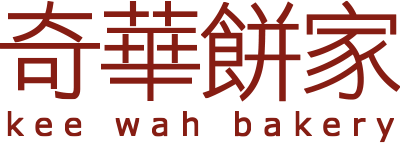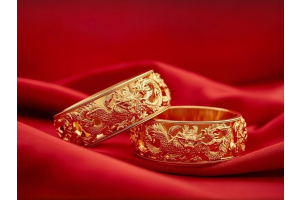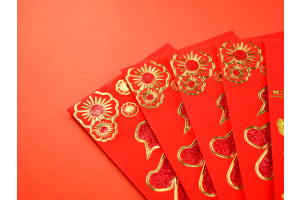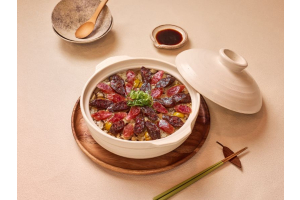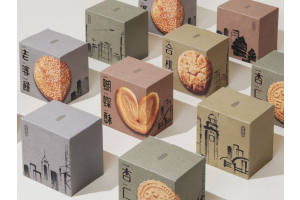A Detailed Guide on the Tea Ceremony Process, Auspicious Sayings, and Taboos

In a traditional Hong Kong wedding, the tea ceremony is one of the most culturally significant and heartfelt rituals. It’s the formal gesture through which the newlyweds express gratitude to their elders. Despite many traditional practices being simplified in modern weddings, the tea ceremony remains an indispensable part of the celebration. This comprehensive guide breaks down everything you need to know—from choosing the right tea, step-by-step ceremony procedures, to auspicious sayings and taboos—to help couples plan a seamless and meaningful ceremony.
Full Tea Ceremony Process
-
Preparing Ceremony Essentials
Begin by preparing essential items such as 「囍」 kneeling cushions, which help relieve knee pressure—especially useful for brides in a traditional kwa dress. Use a red or red-and-gold bridal tea set with ceramic cups. If serving tea to peers, disposable red paper cups are acceptable. At least four cups are usually needed, as the couple will serve tea together to a pair of elders.
-
Preparing the Tea
Each cup should contain a pair of whole red dates and unpeeled lotus seeds. Red dates symbolize good fortune, while lotus seeds represent fertility and completeness—both crucial symbols of a harmonious marriage.
The tea leaves you choose carry deep cultural meaning. The aroma and taste matter, but the tea’s name and symbolism are even more significant:
- Po Li: Ages well over time; symbolizes enduring love and a deepening marriage.
- Ti Kuan Yin: Rich and long-lasting; linked to the blessings of Kuan Yin and a happy union.
- Jasmine Tea (Heung Pin): Represents continuity of the family line; its light floral scent is pleasing and symbolic of lasting legacy.
- Longjing (Dragon Well): "Dragon" symbolizes prosperity and the union of dragon and phoenix—a heavenly match.
- Bi Luo Chun: The curled leaves resemble intertwining love; perfect for symbolizing an everlasting bond.
All these teas are available at Kee Wah Bakery, carefully curated and packaged in airtight tins for convenience on your wedding day.
Price: $62–68 per small tin, $100–118 per large tin. Purchase here
-
Tea Ceremony at Bride’s Home Before Departure
The ceremony starts at the bride’s family home, where she pays tribute to her parents before leaving. Bridesmaids can assist by preparing tea, offering cups, saying auspicious phrases, and managing gifts.
During the ceremony, the couple kneels on cushions, following the “groom on the left, bride on the right” rule. The groom serves tea to the bride’s father first, then mother; the bride follows in the same order. Tea should be served with both hands, accompanied by respectful titles such as “Dad, please have some tea” or “Mom, please have some tea.” The bridesmaids will chime in with auspicious phrases to enhance the festive mood.
-
Receiving Gifts
After drinking the tea, elders give their blessings and present red envelopes or gold jewelry to the couple. Gifts are accepted with both hands, and experienced bridesmaids or a dai kum jeh (wedding chaperone) may help the bride wear the jewelry—signifying the elder’s blessings and approval.
-
Tea Ceremony at Groom’s Home
After the bride’s home ceremony, the couple proceeds to the groom’s home. There, they will perform ancestral worship and serve tea to the groom’s parents, mirroring the earlier procedure.
-
Serving Tea to Other Elders
After both sets of parents have been honored, the couple continues serving tea to other senior relatives by order of seniority: grandparents first, then uncles and aunts. Married cousins or siblings from the same generation are served tea while standing. If there are many elders, some of the tea serving can be moved to the wedding banquet, but serving the parents must be done in the morning.
25 Auspicious Phrases for the Tea Ceremony
Auspicious phrases add a joyful and heartfelt touch to the ceremony, expressing good wishes for the couple's future. These range from traditional classics to modern, witty blessings.
For Parents and Elders
- After drinking daughter-in-law’s tea, may you enjoy prosperity and honour.
- One cup from the bride, wealth and blessings will fill your home.
- Smiling parents sipping tea today, a grandchild in arms without delay!
- A joyful sip from the bride/groom, the house fills with laughter and luck.
- A sip of the son-in-law’s tea brings health and fortune.
- A bride this year, a grandchild next year.
- Tea from a good son/daughter—your blessings are secured for life.
For Relatives
- Serve tea to Uncle—new house every year!
- Serve tea to Auntie—new car every year!
- Tea for Aunty keeps her youthful and glowing.
- Tea for Aunt/Madam, she'll soon be cuddling a grandbaby.
- Tea for Uncle/Uncle-in-law, win the jackpot in the lottery!
- A sip from Uncle-in-law’s tea brings business success across the globe.
- Tea for big sis, soon she’ll be cruising in a new ride.
- Uncle and Aunt sipping tea—may your health always bloom!
General Well-Wishes
- A hearty sip today, a million-dollar salary on the way.
- One sip, around the world you’ll travel—together with the couple.
- Tea in your mouth, fortune at your doorstep.
- Drink this tea, buy that car and condo.
- Sweet tea now, full-moon baby party soon.
- Sip deep, earn more, win all the lotteries galore!
- Finish the tea—this couple adores thee.
- Show the bottom of the cup—more babies to fill up!
- Tea so sweet, buy a house in Happy Valley, no defeat.
- Three sips in, baby ginger party next spring!
Tea Ceremony Taboos and Etiquette
-
Always Use Both Hands
Both tea serving and receiving should be done with both hands. Using one hand is considered disrespectful. Fill the cups about 70% full—overfilling causes spills, while too little seems insincere.
-
Proper Ceremony Location
The tea ceremony must take place in the main hall of the house, not a side room or bedroom. “Main hall tea” symbolizes the marriage is publicly witnessed and officially blessed.
-
Elders Should Avoid Seeing the Bride Enter
When the bride arrives at the groom’s home, grandparents should stay inside and avoid directly seeing the bride enter. Tradition holds that this prevents future familial tension.
-
Special Consideration for Pregnant Brides
If the bride is expecting (a double blessing), she should avoid kneeling, as it’s believed the energies may clash. A respectful bow or standing tea offering is acceptable instead.
-
Avoid Using Diet Tea
In Cantonese, “diet” (gim fei) sounds like “reduce blessings” (gim fuk), making diet tea highly inauspicious. While modern couples may opt for bottled or bagged tea for convenience, freshly brewed traditional Chinese tea is still preferred.
-
Respecting Absent Elders
If one elder is absent due to unavoidable circumstances, still prepare two cups—one for the present elder and the other poured into a bucket as a symbolic gesture of respect for the absent one.
With proper planning and a deep understanding of the ceremony’s significance, the wedding tea ceremony can become one of the most memorable and meaningful parts of your big day. Embrace the tradition and let it reflect your gratitude, love, and blessings for a future filled with harmony and happiness.
